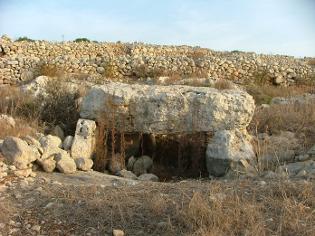MEGALITHIC
STRUCTURES
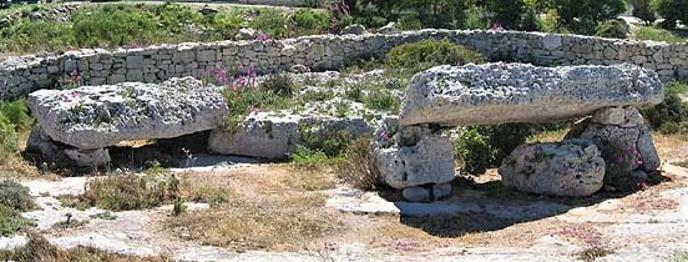
THE DOLMENS AT FUQ SAN FILEP
A dolmen, also known as a portal tomb/grave, quoit, or cromlech is a type of single-chamber megalithic tomb, usually consisting of three or more upright stones supporting a large flat horizontal capstone (table).
Dolmens were usually covered with earth or smaller stones to form a barrow, though in many cases that covering has weathered away, leaving only the basic stone structure of the burial mound intact.
One of the best preserved examples may be found in an area known as Fuq Wied Filep, adjacent to Santa Margherita and tal-Wej on the Mosta / Naxxar boundary.
Situated in the immediate proximity of the great natural fault, it overlooked a small valley that once connected to the bottom end of Wied il-Ghasel, hence the nameplace Fuq San Filep - Lit. Above St. Philip (Valley).
The site constitutes a pair of dolmens set a few metres apart on a stretch of limestone rock surface. Quarrying evidence within the site suggests the capstones were dug out of the rock to one side and to the rear of the structures.

OTHER MEGALITHIC STRUCTURES
This Dolmen pair is one of several other Megalithic sites in the area.
Traces of Megalithic walls have been noted in the Sant' Andrija area and around Wied il-Ghasel.
High ground has always been a crucial factor in averting risk of flood and allowing observation of movement and potential threats from the distance. This in turn created time for preparations to be made in case of trouble, while the high ground became a weapon in itself, in an age where rock throwing was the predominant form of ordnance available.
Consequently, several hill-top and high ridges across the islands have been identified as fortified Bronze Age settlements including a site at Misrah Ghonoq and another at the nearby Qala Hill.
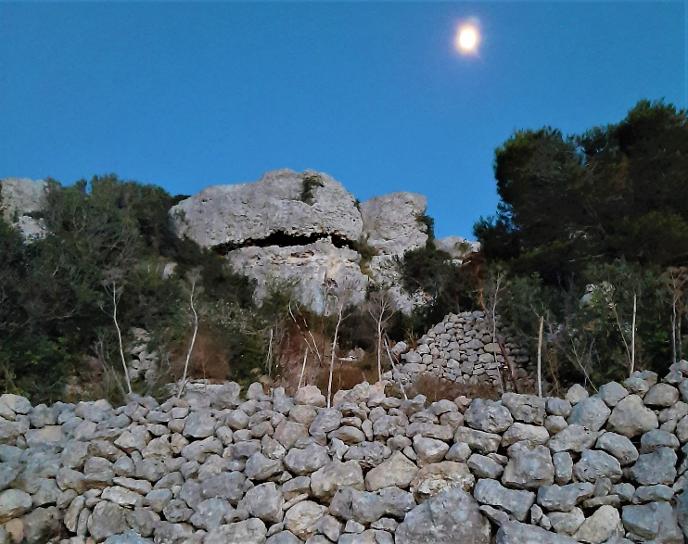
Fortified Bronze Age Settlement at Qala Hill, situated in Qannotta Valley between Bidnija & Wardija
The height of the promontory above the Natural Fault and its Wied il-Ghasel backdrop make Misrah Ghonoq ideal for a fortified settlement.
Studies carried out at here suggest the presence of a massive structure. Professor TagliaFerro described one of its walls being some 50 feet long.
Architect Gorg Grognet made some rather detailed drawings of the ruins before they were removed by the British colonial authorities in view of building Fort Mosta on the same site.
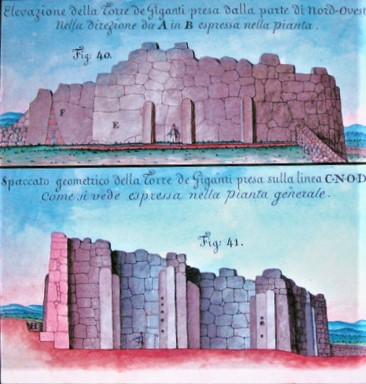
Grognet's depiction of a Megalithic structure that once stood instead of Fort Mosta
Remains of another three temples / dolmens are to be found at tal-Qadi (close to Salina), in Qawra (within the Dolmen Hotel grounds) and at ta' Hammut (near Qalet Marku). Their geographical positioning with respect to each other is illustrated below. The distance from B to the other 3 sites is roughly the same, or around 20-30 minutes of brisk walking away.
The Mosta Dolmens site (A) would have been visible by the other three.
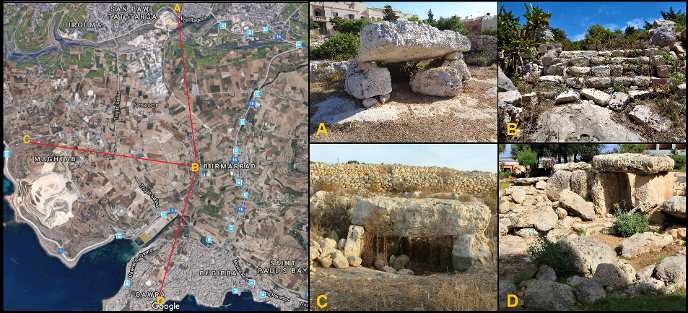
To read more about the temples around Mosta, kindly access the links below
It-Tempju Preistorici f'Bugibba by Vincent Zammit
The Maltese Dolmens by Daniel Sciberras
The Bronze Age in Europe by Coles & Harding
